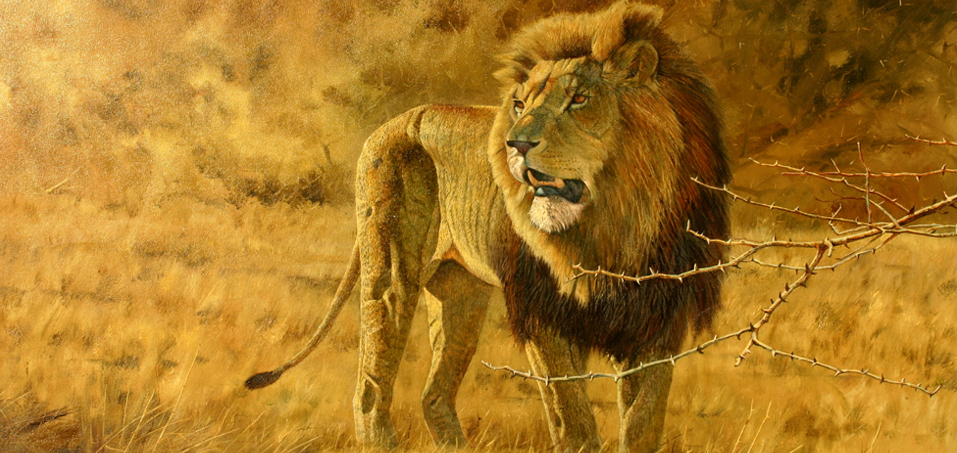 Ant Fynn is a Zimbabwean artist with a passion for painting African landscapes and wildlife. More than that he strives through his art to make people aware of the beauty of Africa and get them involved in conserving it.
Ant Fynn is a Zimbabwean artist with a passion for painting African landscapes and wildlife. More than that he strives through his art to make people aware of the beauty of Africa and get them involved in conserving it.
Describing his life and work Fynn says, “I have been painting Africa and its wildlife for many years and never get tired of it. Every day I see something which I long to paint, every day I think of scenes which I want to paint before they disappear. There is no limit to the fascination which wild Africa has for me. I feel that the original inhabitants of Zimbabwe, the San, must have felt something similar when they left their amazing paintings all over the country on rock faces – paintings which still endure to this day and should be preserved and protected for generations yet to be born.”
“I was born in Zimbabwe and as a child, I loved to walk in the bush and come home and draw what I had seen. I loved reading books on Africa and its wildlife and looking at old illustrations in them. You cannot teach this sort of passion – you are born with it. Most of my earliest drawings were of birds, as their colour and movement are always around and stimulate me to want to copy their beauty. You do not have to be anywhere special to see and appreciate birds, and even some of the most common birds have their own kind of magic. Birds lead on to bigger things – knowledge of trees and flowers, and then to larger game such as lion and elephant. And then on to wanting to paint all the wonderful places in which we find this irreplaceable wild heritage of ours.”

“There are many types of art but I strongly feel that the artist must paint what he loves. I very seldom paint people, and never cities, or abstracts, for the simple reason that I probably would not be very good at it. There will always be someone else with a passion for those subjects that will be much better. Art is a journey, often a long one, and the compulsion comes from inside. There is always a lot more for a wildlife artist to try to accomplish. Through his paintings the artist is bringing the beauty of the world around us into our homes – paintings which evoke the colours, smells and feel of Africa. So my inspiration is this beautiful natural world which is around us in our country and I visit its wild places as often as I can.”
Who buys paintings of wildlife and wild places? It varies. Many people want a reminder of somewhere they have really enjoyed and would like to visit again and again. Some people love a particular animal, elephant for example, and want a painting of them. Hotels and lodges which want to create an “African atmosphere” need paintings of scenic Africa and its wildlife. A recent painting by Fynn to celebrate a wedding was of elephants with their babies, signifying hope for the future. Another was for a customer who wanted a large painting of his ‘mutupo’ or totem– in this case, a leopard. Others want a painting of the area where they grew up and were very happy as children.
 Fynn says, “I have sold at Christie’s in London and have paintings in many countries around the world, but if my art helps to conserve the legacy of our country then it has achieved much more than any sales are worth.”
Fynn says, “I have sold at Christie’s in London and have paintings in many countries around the world, but if my art helps to conserve the legacy of our country then it has achieved much more than any sales are worth.”
He goes on to say, “Here in Zimbabwe we have to realise that we have a jewel in our hands. We have a beautiful country with a priceless asset – its wildlife. We could never rebuild our wild heritage once it is gone. It is unique to us and our country and all of us should work together to conserve it. It is our responsibility and no-one else’s. So I encourage everybody to fall in love with our country’s greatest asset and protect it for the future. Visit all the wonderful places in our country, marvel at our wildlife and protect the trees which keep everything else alive. Refuse to accept that our heritage is here to be used until it is finished. And have paintings of it on your walls to remind you that this is a special and unique heritage that gives you joy and hope. It is different to anywhere else in the world. Without it we are just the same as many other places, and why would we want to be the same as just anywhere else?”
Be sure to visit his website www.antfynnafrica.com and follow him on Facebook.

